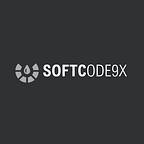How do I create and use classes and objects in Dart?
In Dart, creating and using classes and objects follows a similar structure to other object-oriented languages. Here’s a basic overview:
1. Creating a Class
A class is a blueprint for creating objects. It defines properties (variables) and methods (functions) that the objects created from the class will have.
Here’s an example of a simple class:
class Person {
String name;
int age;
Person(this.name, this.age);
void displayInfo() {
print(‘Name: $name, Age: $age’);
}
}
In this class:
- name and age are properties (also called fields or attributes).
- The constructor Person(this.name, this.age) initializes the properties when the object is created.
- displayInfo is a method that displays the person’s name and age.
2. Creating an Object
Once you’ve defined a class, you can create objects from it. Objects are instances of the class and have access to the class’s properties and methods.
void main() {
Person person1 = Person(‘John Doe’, 25);
print(person1.name);
person1.displayInfo();
}
3. Private Properties and Methods
In Dart, you can make properties and methods private by prefixing them with an underscore (_).
class Car {
String _model;
Car(this._model);
String getModel() {
return _model;
}
}
4. Getters and Setters
Getters and setters allow controlled access to class properties. Dart supports automatic getters and setters, but you can also define them explicitly.
class Rectangle {
double _width;
double _height;
Rectangle(this._width, this._height);
double get area => _width * _height;
set width(double value) {
_width = value;
}
set height(double value) {
_height = value;
}
}
5. Inheritance
In Dart, a class can inherit properties and methods from another class using the extends keyword.
dart
class Animal {
void makeSound() {
print(‘Animal makes a sound’);
}
}
class Dog extends Animal {
@override
void makeSound() {
print(‘Dog barks’);
}
}
void main() {
Dog dog = Dog();
dog.makeSound(); // Output: Dog barks
}
6. Abstract Classes and Interfaces
An abstract class is a class that cannot be instantiated. You use it as a base class that other classes inherit from. It can contain abstract methods (methods without implementation).
abstract class Shape {
double getArea();
}
class Circle extends Shape {
double radius;
Circle(this.radius);
@override
double getArea() => 3.14 * radius * radius;
}
void main() {
Circle circle = Circle(5);
print(circle.getArea()); // Output: 78.5
}
Summary
- Class: A blueprint for creating objects.
- Object: An instance of a class.
- Constructor: A special method to initialize objects.
- Methods: Functions inside a class.
- Getters and Setters: Control how you access and set property values.
- Inheritance: Reusing and extending functionality from another class.
- Abstract Classes: Classes with unimplemented methods, serving as a template for subclasses.
You can use these building blocks to create more complex applications in Dart.
Hire Me: https://www.fiverr.com/s/Gzyjzoz
Facebook Portfolio: https://www.facebook.com/iamsusmoydutta
— — — — — — — — — — -
Behance Portfolio: https://www.behance.net/susmoydutta
— — — — — — — — — — -
Linkedin Profile: https://www.linkedin.com/in/susmoy-dutta/
— — — — — — — — —
